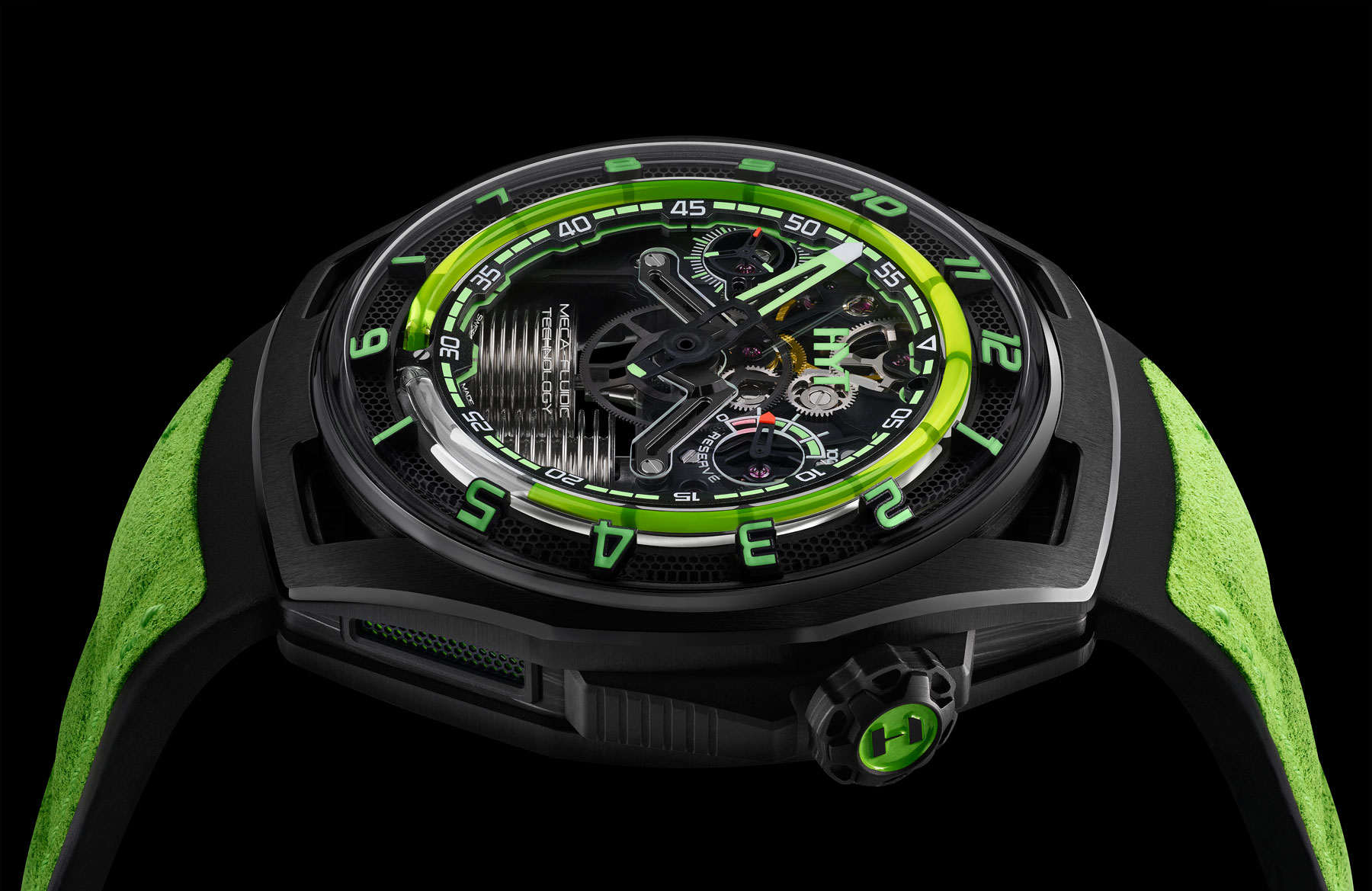Davide Cerrato, formerly of Montblanc, has taken over HYT to relaunch the brand, less than a year after it was shuttered.
A version of liquid timekeeping was introduced by Concord during Baselworld 2009, which we covered here. Concord, which was owned by the Movado Group, is not currently in operation.
Vincent Perrier, who was CEO of Concord in 2009, went on to start HYT in 2012, which used a similar liquid timekeeping concept to produce an even more advanced way of using liquids to display the time.
We covered HYT when they first launched the brand at Baselworld 2012 and numerous times over the years. The technology improved with new iterations, however, there were almost always technical issues that persisted, even when the movement maker changed from APRP to Chronode.
I can recall the time I was making a video of the HYT H2 (movements were still being made by APRP at the time) at the Mandarin Oriental in NYC, with the help of HYT’s brand rep who had flown in. During the production of the video, the representative told me that the movement was overheating (I believe she said it was the bellows) and that the watch was a prototype. Needless to say, I’d never heard of any watch overheating prior to that, but still, I did not think much of the issue as it was a prototype.
Fast forward to today, and while the technology has evolved, the system works basically the same way: bellows located at 6 o’clock pump fluid in and out of the hour display tube that runs around the circumference of the dial, which is adjacent to the hour markers, allowing you to read the current hour.
And so, it may still create service issues, and those are issues that need to be handled at HYT’s official service center, which is not unlike a complicated tourbillon from Patek or AP, which more or less, should always go back to the factory for service due to the complexity of the movement, required training to work on it, and specialized tools and processes that may exist nowhere else. These are expensive machines and all watches need work but if there are constant service requirements — and we don’t know the frequency required — then that could be a problem for some consumers.
Eventually, Vincent Perrier exited the business, which is surprising for a brand he founded. Following his exit, the company continued to evolve and ultimately moved movement design and production to Chronode. Together HYT and Chronode developed the HYT H0 and H2.0, which took on a new aesthetic. The cases are covered in a huge sapphire bubble, which is really interesting, although large.
Ultimately, HYT filed for bankruptcy protection in 2021, as reported by the Robb Report, and the company was dissolved.
Somewhat surprisingly, an investor KTS (Kairos Technology Switzerland SA), came in and has relaunched the brand — under the helm of experienced watch designer and brand manager Davide Cerrato, who was most recently the watch brand manager at Mont Blanc, and the head designer at Tudor before that. This gives the company a much better chance of surviving.
The new design has a clear resemblance to past models released over HYT’s decade of existence but has been refined with an all-new case shape that’s not perfectly round like most HYT watches. Plus, the cases have been downsized from 48.8 mm diameter to 48 mm — and most noticeably the thickness has been reduced from 18.7 mm to 13.3 mm.
The HYT Hastroid Green Nebula (Ref. H02698-A) now features an updated movement with a 72-hour power reserve, made in partnership with master watchmaker Eric Coudray. The watches have a depth rating of 50 meters and will be available on a limited basis for almost double what the H2.0 models listed for a year or two ago, at approximately $75,000. Hopefully, with such a significant price increase, the quality and reliability are no longer an issue.
Photos by HYT.



